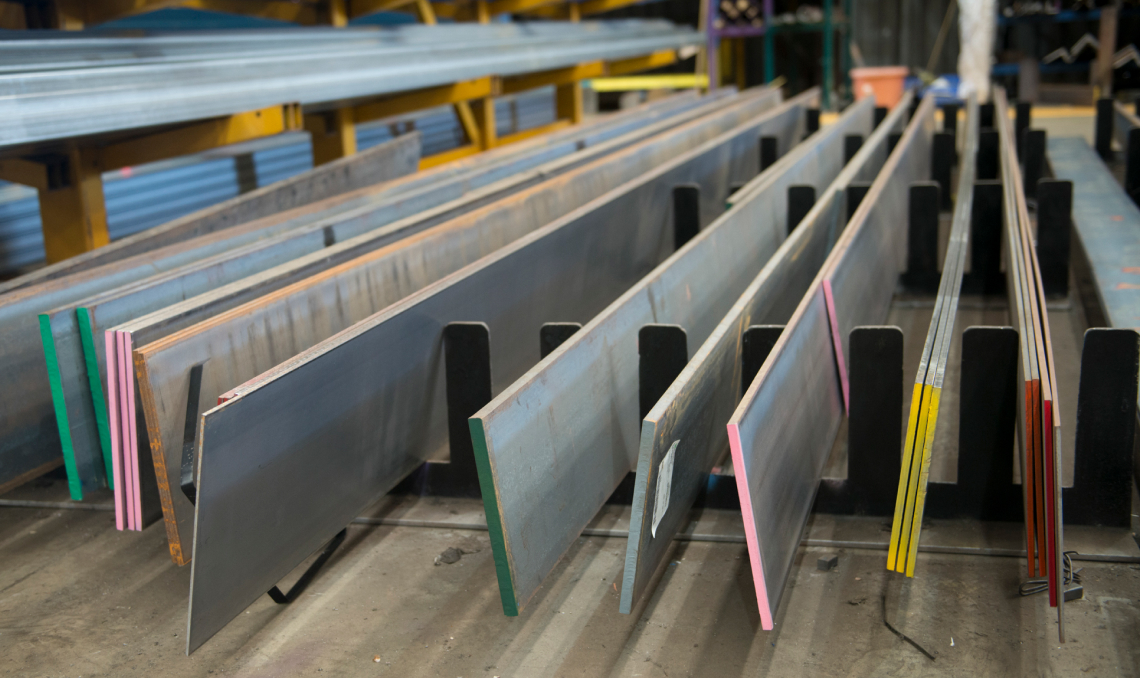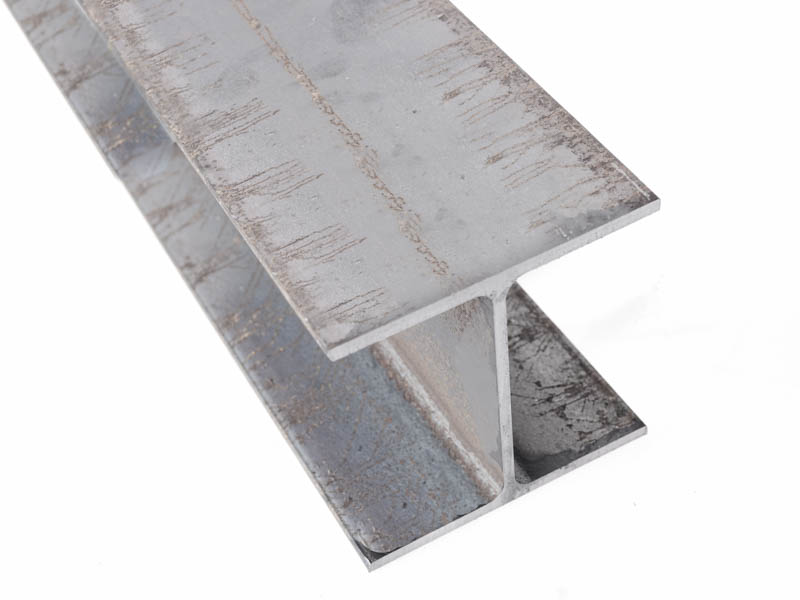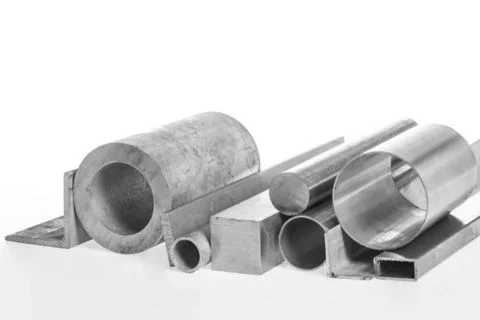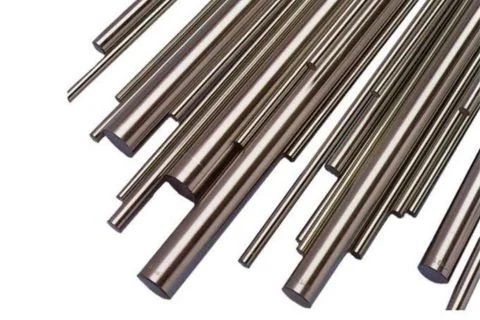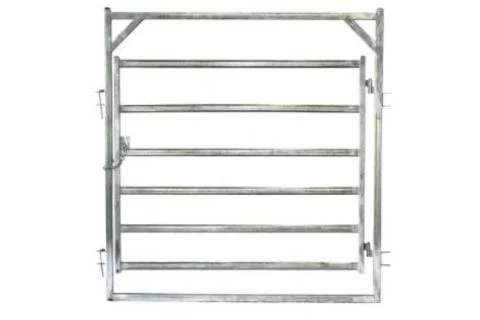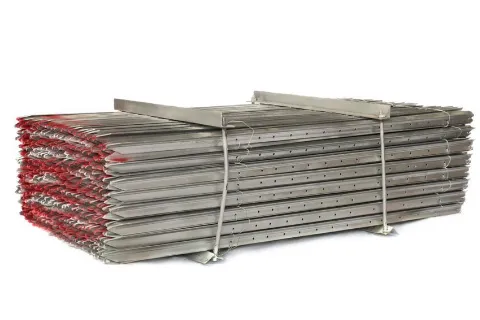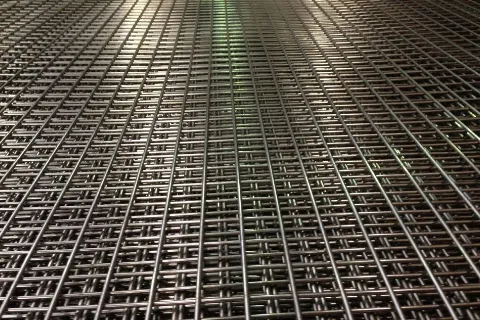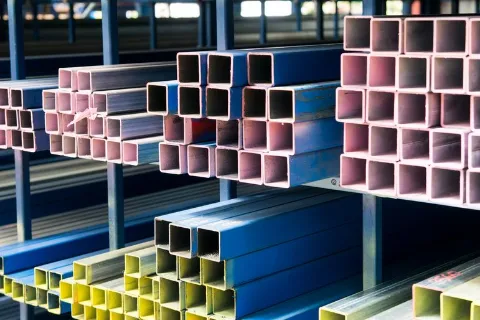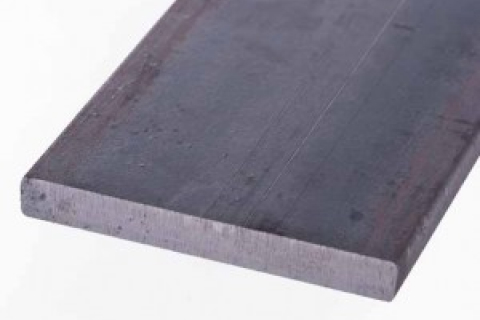Al
Chemical symbol for aluminium.
Alloy steel
Steel that is mixed with other elements to improve its mechanical properties and performance. e.g. 4140 Grade Steel
Abrasion resistance
Resistance to frictional rubbing, rather than resistance to knocks and impacts.
Air hardening steel
Steels that will harden by air cooling rather than quenching.
Accelerated weathering
Simulations of natural weathering processes on a coating, material or product to determine its ability to withstand exposure to outdoor conditions.
Anisotropic
Steel with the iron atoms arranged in a face centred cubic pattern. (Found at high temperature in carbon steels but at room temperature in some alloy steels, e.g. austenitic stainless steel.)
Accreditation
Certification by a duly recognised body of the suitability of a group or an individual to provide the specific service, product or operation needed. This is an important part of ensuring quality throughout the steel industry.
Austenite
Steel with the iron atoms arranged in a face centred cubic pattern. Found at high temperature in carbon steels but at room temperature in some alloy steels (e.g. austenitic stainless steel).
Ageing
Changes in the properties of steel that occur over time and affect its mechanical properties.
Austenite grain size
The grain size of steel when heated to the austenitic region. This is generally measured by a standardised testing procedure, e.g. McQuaide-Ehn test.
B
Chemical symbol for boron.
Bainite
Microstructure of carbide dispersed in ferrite, usually obtained by interrupted quenching of steel (banded structure).
Banding
A segregated structure of parallel layers, usually in the direction of rolling.
Bend test
A method for measuring ductility (i.e. stiffness and yield properties) of certain materials.
Bi
Chemical symbol for bismuth.
Billet
A semi-finished forged, rolled or continuously cast product, usually rectangular, intended for further processing by rolling or forging. Cross section generally less than 165mm square and width to thickness ratio less than 4:1.
Black bar
Steel in the hot rolled condition with its characteristic grey to black surface scale.
Bloom
Same definition as billet, except that the cross section is generally greater than 165mm square; blooms are usually rolled into billets.
Brazing
A method in which two or more metal items are joined together by melting a filler metal into the joint.
Bright bars
Bars produced by cold drawing, cold rolling, turning and polishing, precision grinding or a combination of these processes and that have a smooth surface free of scale and harmful imperfections.
Brinell hardness
A specific type of hardness test that determines hardness by the diameter of the impression left by ball indenter to which a controlled load is applied.
Bronze welding
Similar to brazing but utilises filler bronze rods to weld metals together, creating a stronger weld.
C
Chemical symbol for carbon.
Camber
A curve or deviation in the vertical plane of a sheet of metal, measured from the concave side using a straight edge.
Capability (production)
The product range and speed of production of a particular machine or process.
Capability (statistical)
The ability of a process within statistical control to conform to specification. Usually expressed as values of Cp or Cpk.
Carbo-nitriding
Case hardening of a steel object by heating in a gaseous atmosphere rich in both carbon and nitrogen. The hardening is through the introduction of both carbon and nitrogen to the steel surface.
Carbon steel
Steel that has not had alloying elements intentionally added to it and relies on its carbon content for its properties.
Carburising
The raising of the carbon content of the surface of a steel object (usually by heating in the presence of a source of carbon).
Case hardening
The use of metallurgical processes (carburising, cyaniding, nitriding or other heat treatment) to harden the surface of a metal object, leaving the core relatively soft.
Cast analysis
See heat analysis.
Cast certificate
See heat certificate.
Cd
Chemical symbol for cadmium.
Centre buckle
(full centre) A flatness defect where a series of waves form in the centre of a sheet of metal.
Certificate of compliance
A certificate signed by an authorised party affirming that the supplier of a product or service has met the requirements of the relevant specifications, contract or regulation.
Certificate of conformance
A certificate signed by an authorised party affirming that a product or service has met the requirements of the relevant specifications, contract or regulation.
Chalking
A powdery residue that forms on the surface of an organic coating, usually after long-term exposure to sunlight.
Charpy
See impact test.
Chatter
A series of marks or lines on either the surface of a metal or on paint film. Caused by vibration or eccentric rolls in processing equipment.
Co
Chemical symbol for cobalt.
Coarse grained (austenite)
A steel prone to grain growth at elevated (austenitic) temperatures. This is usually measured by a standardised testing procedure, e.g. McQuaid-Ehn test.
Coating class
A designation system that combines the coating mass of a metallic coated steel product with the type of alloy coating used, measured by a triple spot test (as detailed in Australian Standard 1397).
Coating mass
The amount of coating on both sides of the steel base, expressed in grams per square metre (g/m2).
Cold draw
Drawing below the recrystallisation temperature through a die. Usually results in work hardening of the material. This is a method of producing bright bar.
Coil
A finished steel product, such as a sheet or strip, that has been wound or coiled after rolling.
Coil set
The tendency of a length of strip to retain a residual curvature as it comes off the coil.
Cold rolling
A metal forming process in which metal is passed through rolls to reduce or even the thickness of a steel sheet or strip.
Cold sized bars
Bars that are sized by cold drawing or cold rolling to provide closer dimensional tolerances than occur for hot rolled bars, but which may contain some surface imperfections.
Cold work
Deformation below the recrystallisation temperature. Usually results in hardening of the material (i.e. work hardening).
Continuous casting
A technique of casting molten metal into blooms, slabs and billets that continually solidify while being poured, thus by-passing the ingot stage.
Conversion coating
A chemical treatment that converts a strip into a non-metallic and non-conductive surface. Improves paint adhesion and corrosion resistance.
Corrosion
The gradual destruction of materials by chemical and/or electrochemical reaction with their environment.
Cr
Chemical symbol for chromium.
Cu
Chemical symbol for copper.
Cupping test
A testing method that assesses the ductility properties of a metal sheet or strip.
Cyaniding
Case hardening of a steel object by immersion in a molten cyanide salt bath, followed by quenching. The hardening occurs through the introduction of both carbon and nitrogen to the steel surface.
Decarburisation
The reduction or complete loss of carbon content in metals (usually steel). Typically occurs when metal is heated above 700°C.
Deep drawing
A shape transformation process in which metal is radially drawn into a forming die by the mechanical action of a punch.
Die
A block or plate with a conical hole through which bar is drawn.
Diffusion
The gradual permeation of atoms or molecules through a material, caused by thermal agitation.
Dislocation
A fault in the regular stacking pattern of atoms in a crystal or grain.
Draft
The reduction of cross section area that occurs when a bar is drawn through a die.
Dry film thickness
The thickness of a coating, as measured (in micrometres) above the substrate.
Ductility
Relative ability of a metal to deform from a flat condition into a more complex shape without fracture; formability, workability.
Dunnage
Loose material laid between or wedged amongst cargo for protection from transit damage.
Elasticity
The property of a material that causes it to resume its original form after removal of a load.
Elastic limit
The maximum stress to which a material may be subjected without any permanent strain remaining upon complete release of stress.
Electrolyte
A liquid that conducts electricity through the movement of salts in a solution.
Elongation
The degree to which a metal may be bent, stretched or compressed before fracturing. Expressed as a percentage of the original length, it is a point between tensile strength and yield strength.
Etching
Controlled application of aggressive chemicals to the surface of a sample, usually for the purpose of revealing its structure.
Eutectic
An alloy whose melting point is lower than any other mixture of its constituents and which solidifies as a dispersion of two distinct solids. Eutectic dispersions usually have a characteristic pattern.
Eutectoid
A solid alloy analogous to a eutectic that, on cooling, decomposes to form a dispersion of two new and distinct solids.
Fatigue
The weakening of a material due to fluctuating stresses. Leads to progressive and localised structural damage and the growth of cracks.
Fe
Chemical symbol for iron.
Ferrite
Iron with atoms arranged in a body centred cubic pattern. Found in carbon steels at room temperature.
Ferromagnetic
A substance that possesses magnetic properties in the absence of an external field (e.g. iron and steel).
Flame hardening
A surface hardening process that uses a gas flame to heat the surface prior to quenching. Similar to induction hardening with a different heat source.
Fine grained (austenite)
A steel whose tendency to grain growth at elevated temperatures has been reduced (e.g. by addition of aluminium). This is usually measured by a standardised testing procedure, e.g. McQuaid-Ehn test.
Finish
The degree of smoothness of lustre of the sheet.
Flatness
The amount of waves or buckles in a sheet, measured by the amount of space between a sheet and a completely flat surface.
Fluting
The tendency of sheet metals to form near parallel kinks or creases during curving or bending.
Formability
The relative ease with which a metal can be shaped through plastic deformation.
Fracture toughness
See impact toughness.
Free cutting steel
Steel that has been metallurgically altered to improve machinability.
Free machining steel
Steel that forms small chips when machined, increasing its machinability as the chips are broken into small pieces, thus avoiding entanglement in the machinery.
Fretting corrosion
Damage caused by a combination of mutual abrasion and corrosion between two contacting metal surfaces subject to vibration.
Galling
Damage caused by the chaffing of metal surfaces in contact.
Galvanic cell (corrosion)
Two dissimilar metals in the presence of an electrolyte causing corrosion of one (the anode) through the passage of a self-generated electric current.
Galvanising
The process of applying a zinc coating to iron or steel to provide a corrosion resistant surface.
Gloss
The degree to which a painted surface possesses the property of reflecting light in a mirror-like (specular) manner.
Grain
Individual crystals in a metal.
H
Chemical symbol for hydrogen.
Hardenability
The depth and level of hardness that can be achieved in a metal under a standard heat treatment test i.e. a metal’s potential ability to be hardened. Not to be confused with hardness. For example, an annealed material may be low in hardness but it may have a high potential to be further hardened (hardenability).
Hard drawn
Cold drawing with a relatively high draft, resulting in a high degree of work hardening.
Hard metric
Full and complete metrication without cognisance of other measurement systems.
Hardness
The resistance of a material to plastic deformation by indentation or penetration. Generally more specifically referred to as indentation hardness or penetration hardness.
Heat affected zone (HAZ)
In a process involving localised heating (e.g. welding), that area of the surrounding metal that has not been melted but is nevertheless metallurgically affected by the heat.
Heat analysis
The chemical analysis of a sample usually taken from the molten steel before casting.
Heat certificate
A certificate signed by an authorised party that demonstrates that the heat or cast conforms to the chemical specification.
Heat treatment
A process used to alter the physical and/or chemical properties of a material for the purpose of obtaining certain desired conditions or properties.
Hot roll
Rolling above the recrystallisation temperature.
Hot work
Deformation above the recrystallisation temperature.
Hydrogen embrittlement
Brittleness induced in steel as a result of the introduction and diffusion of hydrogen into the material. Commonly occurs in pickling and electroplating operations.
Impact test
A test of toughness that measures the energy absorbed when a specimen is struck with a controlled blow.
Inclusions
Particles of impurities contained in a material.
Induced current
The electric current produced by moving a conductor in a magnetic field.
Induction hardening
A surface hardening process that uses an electro-magnetic field to heat the steel prior to quenching.
Ingotism
Grain structure characteristic of a cast ingot with pronounced variation from the surface to the core and with inherent planes of weakness.
Internal stress
Stresses that are retained within a metal following thermal or mechanical straining.
Izod
See impact test.
Jominy (end quench)
A test for determining hardenability.
Killed steel
A deoxidised steel that has some or all of the oxygen removed from the melt during the steelmaking process.
Lay
The direction of the predominant pattern on a machined surface.
Lock-forming
The forming of two adjacent edges prior to interlocking.
Lock-seaming
The closing of a tight seam of lock-formed edges of sheet metal.
Longitudinal
In the direction of rolling or metal flow.
Low alloy steel
Steel containing up to 10% of alloying elements.
Machinability
The ease with which a material can be machined. It is an ill defined technical term in which performance is evaluated by a variety of measures e.g. tool life, tool wear (part growth), surface finish, surface type.
Macroscopic examination
Visual examination at magnification of less than 10X.
Macrostructure
The structure of a material under macroscopic examination.
Magnetic permeability
The ability of a material to become magnetised. Highly permeable materials are easily magnetised.
Martensite
Steel with the atoms arranged in a body-centred tetragonal pattern and supersaturated with carbon. Produced by rapid quenching of austenite.
Mass effect
The variation in mechanical properties caused by the influence of the size of the material.
Matrix
The enveloping phase (background) in which another phase is embedded.
Mean
Arithmetic average.
Mechanical properties
Properties relating to the behaviour of materials under load in conventional mechanical tests.
Merchant bar
A finished product of solid section that may have rectangular, square, round or hexagonal cross-section. Used as raw material for bright bar production.
Mg
Chemical symbol for magnesium.
Microcracked (chrome plating)
Containing microscopic cracks that do not provide a continuous path through the plating.
Micrometre
See micron.
Micron
0.001mm or 0.00004.
Mirostructure
The structure of a material as viewed by the microscope (magnification above 10X).
Mid radial
A point equidistant from the centre and the circumference of a circular section.
Mild steel
A malleable and ductile steel with low carbon content. While it has relatively low tensile strength, surface hardness can be increased through carburising.
Mill Finish
A general reference to the surface appearance and texture of steel or metal when production is complete. This will vary widely depending the product and type of metal. Generally the surface will be rough, dull and will contain oxidation (rust) or contamination from the mill process. Where appearance is a consideration mill finish will not normally be adequate. Further treatments and surface finishes are available (charges apply).
Minimised spangle
The inhibition of normal zinc spangle formation by cooling or by bath control.
Mn
Chemical symbol for manganese.
Mo
Chemical symbol for molybdenum.
Modulus of elasticity
Elastic stress per unit of elastic strain.
Morphology
The form, structure and distribution of a phase.
N
Chemical symbol for nitrogen.
Nb
Chemical symbol for niobium.
Ni
Chemical symbol for nickel.
Nitriding
A steel case hardening process in which nitrogen is introduced to the steel surface by means of heating in a nitrogen rich environment e.g. ammonia. The nitrogen forms hard nitrides, particularly in steels containing Al, Cr, V, W and Mo.
Normalising
The process of heating and cooling steel to produce a medium-to-fine pearlite microstructure. Generally used to refine the grain size, render the structure more uniform and improve the mechanical properties.
Nucleation
The start of growth of a new phase.
O
Chemical symbol for oxygen.
Oxide inclusions
Particles of oxide impurities within a material. Usually regarded as undesirable.
P
Chemical symbol for phosphorus.
Pb
Chemical symbol for lead.
Passivation
A chemical treatment for stainless steel and other alloys that enhances the ability of the treated surfaces to resist corrosion.
Pearlite
An iron/iron carbide eutectoid of approximately 0.8% C, which is characterised by a lamellar structure.
Peeled bar
Bars that are finished by rough machining.
Phase
A physically distinct, homogeneous component of a microstructure, e.g. ferrite, cementite.
Phase diagram
A graph of phase relationships with chemical composition and other factors, e.g. temperature.
Phosphating
A treatment that converts galvanized surfaces to insoluble complexes, thick enough to provide good adhesion for subsequent paint films.
Pickle
Removal of scale by immersion in a dilute acid bath.
Pickling
The process of removing oxide films from metals by immersing them in acid.
Powder metallurgy
The production of metal components by compacting powder in a die, followed by sintering (bonding).
Precision ground bar
Bright bar that has been subsequently ground to improve dimensional tolerances and surface finish.
Pressing
A metal working process in which a flat blank, constrained between two surfaces, is forced by a punch to form a required shape.
Primer
The first coat of a painting system applied to an unpainted surface.
Product analysis
Chemical analysis of the finished product from the steel mill (not analysis of the molten steel).
Proof stress
That stress at which a material exhibits a specific limiting permanent set.
Proportional limit
The stress at which a tensile sample ceases to behave as an ideal spring according to Hooke’s Law, i.e. extension ceases to be proportional to load. This is usually close to the yield point in carbon steels.
Quality assurance
Planned and systematic actions to provide confidence that goods or services will satisfy the requirements.
Quality control
The operational techniques and activities that are used to ensure that quality requirements will be fulfilled, e.g. inspection.
Quench
Rapid cooling from an elevated temperature, e.g. by immersion of red hot steel in water.
Ra
A measurement of surface roughness that is calculated by taking the arithmetic mean of the deviations from the centre line.
Recrystallisation
The reformation to 'round' ferrite grains flattened during rolling. This occurs at temperatures above 725oC, either immediately after hot rolling or during annealing after cold reduction.
Reeling
The straightening and smoothing of a round bar by feeding through a set of skewed, contoured rolls.
Resquared
A metal sheet that has been sheared to accurate dimensional limits as a last operation in its production.
Rockwell hardness
A method of hardness testing that utilises an indentor under a fixed load. The depth of indentation is a measure of the hardness.
Rod
A semi-finished or finished product of approximately circular cross section produced in coils.
Rolling direction
The main direction in which the metal strip has been rolled. Generally longitudinal (in the rolling direction) or transverse (at a right angle to the rolling direction).
Roll-forming
The process by which metal is unwound from a coiled strip and passed through a number of pairs of metal profile rolls.
S
Chemical symbol for sulfur.
Scale
Layers of iron oxide formed on the surface of hot steel when oxygen in the air combines with iron from the steel.
Segregation
Lack of uniformity in composition within an object.
Semi-killed
A steel that is partially de-oxidised (killed) before casting so that shrinkage during solidification is approximately balanced by expansion due to gas evolution. These steels are more prone to segregation than fully killed steels. They are also referred to as ‘balanced steels’.
Sensitisation
Heat induced precipitation of chromium carbides at grain boundaries in austenitic stainless steels. This leaves the steel prone to corrosion because of depletion of chromium in the surrounding matrix.
Sheet
A flat rolled steel product of any width and thickness cut into lengths and stored in a flat condition.
Skin-passing
A cold-rolling operation used to produce a smooth surface of uniform thickness and reduce the yield point phenomenon.
Shot blasting
Blasting with metal shot, usually to remove mill scale.
Sn
Chemical symbol for tin.
Soldering
The process of fusing metals with alloys that have relatively low melting points.
Span Table
A chart or schedule of sizes and distances used by builders and engineers to calculate the appropriate size of beam, lintel, joist or purlin for a particular product and application. e.g. Steel Beam span table
Spangle
Grain or crystal of zinc, or zinc/aluminium as appearing on hot dip metallic coated steel.
Spark Test
A quick method for the approximate determination of the chemical composition of carbon steels. It utilises the appearance of sparks from a grinding wheel as compared with reference samples.
Spheroidise (anneal)
An extended heat treatment process that results in steel with iron carbide in spheroidal form. This is the softest condition obtainable by annealing.
Stainless steel
A family of alloy steels containing approximately 8-25% chromium, characterised by their resistance to corrosion.
Strain
Change in length under load, usually expressed as a fraction or percentage of the original length.
Strain ageing
Ageing that occurs subsequently to the cold working of an alloy. Predominantly due to uncombined nitrogen, it results in a marked decrease in ductility.
Stress-strain curve
A graphical representation of the results of tensile testing with strain (extension) shown on the horizontal axis and stress (load) shown on the vertical axis.
Stress relieving
A process of heating and cooling metal for the sole purpose of removing internal stresses.
Stretcher strain markings
Surface markings that appear during the early stages of the plastic deformation of mild steel and certain copper-base alloys.
Stretcher levelled
A standard of sheet flatness.
Strip
A continuously rolled flat product of any width and thickness, supplied rolled up into and stored in coil form.
Sub-critical anneal
Annealing above the recrystallisation temperature but below the temperature required to form austenite. This results in softening and relief of internal stresses. It does not have full annealing’s capacity to correct some undesirable microstructures.
Temper
A process that modifies the hardness of metals.
Temper brittleness
Brittleness in some alloys, associated with tempering in a particular temperature range.
Temper rolling
A cold-rolling process that adjusts the metallurgical properties of cold-rolled strips, while at the same time enhancing surface texture and flatness.
Tensile strength
The resistance of a material to breaking under tension.
Tensile test
A mechanical test that applies force to a material and measures the response to stress.
Terne
An alloy of lead and tin that is used as a coating in producing terneplate.
Tolerance
Refers to permitted variation in size or other characteristics of an item. Most commonly, tolerance will relate to length or width, but straightness, thickness and elongation will also have tolerance. Tolerance is always relative to the job and often the size of the job. Smaller jobs require smaller (higher) tolerances. Steel is used in a huge variety of applications and generally mills will provide tolerances to fit common applications, but these tolerances will not be sufficient for all applications and further treatment or processing may be required to achieve high tolerance. We only work to mill tolerance and provide products to the tolerance manufacturers specify or to Australian Standards. Higher tolerances will need to be achieved by others.
Toughness
The property of absorbing energy before fracture. Not to be confused with hardness or strength, e.g. glass is hard and strong but not tough.
Traceability
The ability to trace the history of an item by means of recorded identification. This may be either upstream or downstream, i.e. to go backwards in time from a point or to go forwards from a previous point.
Turned and polished
A bright bar produced by removal of the hot rolled surface by a cutting (turning) operation followed by polishing.
Ultrasonic testing
A non-destructive testing method that utilises sound waves of higher than audible frequency to detect the presence of discontinuities (defects).
Vickers hardness
A method of hardness testing that utilises pyramid-shaped indentation under a fixed load. The point-to-point width of the indentation is a measure of hardness.
Vitreous enamelling
A material made by fusing powdered glass to a substrate to create a smooth, durable vitreous coating.
W
Chemical symbol for tungsten.
Wash coat
A thin, semi-transparent coat of paint, applied as a preliminary coating on a surface. Generally acts as a sealer or guide coat.
Weld
A joining operation involving melting of the joined metals.
Yield point
The stress at which a material permanently deforms.
Yield strength
The strength at which steel first exhibits plastic strain.
